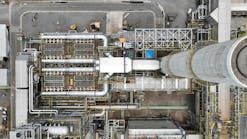ESAI: Shifts in LAC refining sector to alter global trade flows
Additional refining capacity planned for Latin America and the Caribbean (LAC) by 2020 will limit the region’s current demand for surplus global product supplies, particularly those presently arriving from the US Gulf Coast, according to a recent study from ESAI Energy LLC.
“Markets in [LAC] were short roughly 1.5 million b/d of refined products last year,” said John Galante, ESAI Energy analyst.
While LAC’s rising demand growth amid insufficient refinery investments during the past decade have made its import markets a target for refiners and traders from the US Gulf Coast, Europe, and Asia, an expected 620,000 b/d in new capacity by 2020 is set to alter the region’s trade balance for refined products, ESAI Energy said.
Start-up of a 115,000-b/d first phase of Petroleo Brasileiro SA’s RNEST refinery at Abreu e Lima, Brazil, and a 165,000-b/d replacement unit at Ecopetrol’s Cartagena, Colombia, refinery will contribute most immediately to the rise in regional capacity, said ESAI Energy.
But a variety of upgrades and refurbishment projects planned during the next several years for other refineries in LAC and its set of closely integrated subregions—which include the Caribbean Basin, Atlantic South America, Pacific South America, and Mexico—will lead to overall improvements in regional utilization rates and clean-product yields, ESAI Energy forecasts.
Because LAC is a large and diverse region in which these subregions have very different relationships with international markets, the pending improvements and changes to LAC trade balances inevitably will impact global markets, according to the study.
“[LAC] will not forever serve as a bottomless sink that can absorb surpluses elsewhere, and especially the growing export volumes coming out of the US Gulf Coast,” said Galante.
